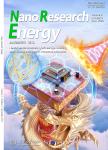Computational design of catalysts for ammonia synthesis
作者机构:Chemistry and Chemical Engineering Guangdong LaboratoryShantou 515021China Institute of Molecular PlusTianjin UniversityTianjin 300072China Department of PhysicsSchool of Physical Science and EngineeringBeijing Jiaotong UniversityBeijing 100044China
出 版 物:《Nano Research Energy》 (纳米能源研究(英文))
年 卷 期:2023年第2卷第3期
页 面:56-65页
学科分类:081704[工学-应用化学] 07[理学] 070304[理学-物理化学(含∶化学物理)] 08[工学] 0817[工学-化学工程与技术] 0703[理学-化学]
基 金:This work was supported by the National Natural Science Foundation of China(Nos.91961125 and 22002085) This work was also supported by Guangdong Basic and Applied Basic Research Foundation(Nos.2020A1515110832 and 2023A1515012816) the“Fundamental Research Funds for the Central Universities”(No.2018JBZ107) “Key Program for International S&T Cooperation Projects of China”from the Ministry of Science and Technology of China(No.2018YFE0124600),Chemistry and Chemical Engineering Guangdong Laboratory(Nos.1932004 and 2011003),Science and Technology Project of Guangdong Province(No.2020B0101370001) the Project from China Petrochemical Corporation(No.S20L00151)
主 题:catalyst design ammonia synthesis computational modeling scaling relations
摘 要:Ammonia plays a crucial role in agriculture and chemical engineering,and acts as a promising carbon-free transportation *** design is deemed as a key to solve the restriction of energy-intensive Haber-Bosch process of ammonia *** the development of computational modeling,computation-aided catalyst design serves as one important driving force for material innovation,saving a lot of experimental efforts based on trial and *** modeling not only provides fundamental mechanistic insights into the reaction with great details regarding adsorbate geometries,electronic structures,and elementary-step energies,but also expedites the material discovery with descriptor-based catalyst design,core of which is the establishment of thermo/kinetic scaling *** this review,we present firstly the mechanistic understanding of ammonia synthesis and transition state scaling relations developed on pure transition-metal *** then summarize catalysts design strategies guided by alloy,size,and magnetic effects with the goal of breaking the limitations set by scaling relations to achieve better catalytic ***,future opportunities and challenges associated with computation design of optimal catalysts for ammonia synthesis are outlined.



